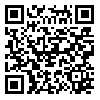Tue, Dec 30, 2025
[Archive]
Volume 8, Issue 4 (10-2018)
Iran J Ped Hematol Oncol 2018, 8(4): 213-220 |
Back to browse issues page
Download citation:
BibTeX | RIS | EndNote | Medlars | ProCite | Reference Manager | RefWorks
Send citation to:



BibTeX | RIS | EndNote | Medlars | ProCite | Reference Manager | RefWorks
Send citation to:
Hosseini M, Qujeq D, Tamaddoni A, Ranaee M, Hajian-Tilaki K. The efficacy of the aqueous extracts of Anethum graveolens, Urtica dioica, and Silybum marianum on the liver function in iron overloaded rats. Iran J Ped Hematol Oncol 2018; 8 (4) :213-220
URL: http://ijpho.ssu.ac.ir/article-1-414-en.html
URL: http://ijpho.ssu.ac.ir/article-1-414-en.html
Non-Communicable Pediatric Disease Research Center, Health Research Institute, Babol University of Medical Sciences, Babol, Iran
Abstract: (3539 Views)
Background: This study aimed to compare the effect of the aqueous extracts of Anethum graveolens, Urtica dioica, and Silybum marianum with deferoxamine (DFO)on iron-overloaded rats.
Materials and Methods: In this case control study, fresh leaves of Anethum graveolens and Urtica dioica as well as seeds of Silybum marianum were washed with water and rinsed with deionized water to remove possible pesticide and preservative residue. Forty eight male rats were randomly divided into six groups: negative control, positive control (iron overload), Anethum graveolens group, Urtica dioica group, Silybum marianum group, , and DFO group. Iron dextran was injected intraperitoneally (i.p.) at 50 mg/kg body weight for 12 weeks (once a week) to establish the iron overload condition. While normal rats received normal saline, rats in the treated groups orally received three plant extracts and DFO (subcutaneously) weekly for 8 weeks (once a week). At the end of the experiment, changes in alanine aminotransferase (ALT) and aspartate aminotransferase (AST) activity were measured using AST and ALT kits from Zist Chem Diagnostics Co. (Tehran, Iran) and histological changes were observed by hematoxylin and eosin staining of the liver.
Results: Iron overloaded rats showed a slightly increase in the serum ALT and AST activity compared to control group (4.97±0.12, 60.79±1.16 vs. 3.92±0.10, 50.24±0.82U/L, respectively) (p value< 0.05). However, relative to iron overloaded rats, treatment with Anethum graveolens, Urtica dioica, and Silybum marianum extracts and DFO significantly decreased the activity of ALT and AST (AlT: activity (4.37 ±0.08, 4.58±0.06, 4.74 ±0.09 and 3.96 ±.015 U/L , respectively );( AST: 53.68±1.24, 55.78±1.03, 57.87±1.15 and 51.65 ±0.66 U/L, respectively) (p value< 0.05). Treatment of iron overloaded rats with Anethum graveolens, Urtica dioica, and Silybum marianum also significantly improved the liver dysfunction.
Conclusion: Anethum graveolens, Urtica dioica, and Silybum marianum may be potential medicinal herbs which can reduce liver damage caused by iron overload.
Materials and Methods: In this case control study, fresh leaves of Anethum graveolens and Urtica dioica as well as seeds of Silybum marianum were washed with water and rinsed with deionized water to remove possible pesticide and preservative residue. Forty eight male rats were randomly divided into six groups: negative control, positive control (iron overload), Anethum graveolens group, Urtica dioica group, Silybum marianum group, , and DFO group. Iron dextran was injected intraperitoneally (i.p.) at 50 mg/kg body weight for 12 weeks (once a week) to establish the iron overload condition. While normal rats received normal saline, rats in the treated groups orally received three plant extracts and DFO (subcutaneously) weekly for 8 weeks (once a week). At the end of the experiment, changes in alanine aminotransferase (ALT) and aspartate aminotransferase (AST) activity were measured using AST and ALT kits from Zist Chem Diagnostics Co. (Tehran, Iran) and histological changes were observed by hematoxylin and eosin staining of the liver.
Results: Iron overloaded rats showed a slightly increase in the serum ALT and AST activity compared to control group (4.97±0.12, 60.79±1.16 vs. 3.92±0.10, 50.24±0.82U/L, respectively) (p value< 0.05). However, relative to iron overloaded rats, treatment with Anethum graveolens, Urtica dioica, and Silybum marianum extracts and DFO significantly decreased the activity of ALT and AST (AlT: activity (4.37 ±0.08, 4.58±0.06, 4.74 ±0.09 and 3.96 ±.015 U/L , respectively );( AST: 53.68±1.24, 55.78±1.03, 57.87±1.15 and 51.65 ±0.66 U/L, respectively) (p value< 0.05). Treatment of iron overloaded rats with Anethum graveolens, Urtica dioica, and Silybum marianum also significantly improved the liver dysfunction.
Conclusion: Anethum graveolens, Urtica dioica, and Silybum marianum may be potential medicinal herbs which can reduce liver damage caused by iron overload.
Type of Study: Research |
Subject:
General
Received: 2018/07/6 | Accepted: 2018/08/24 | Published: 2018/10/7
Received: 2018/07/6 | Accepted: 2018/08/24 | Published: 2018/10/7
| Rights and permissions | |
 |
This work is licensed under a Creative Commons Attribution-NonCommercial 4.0 International License. |



